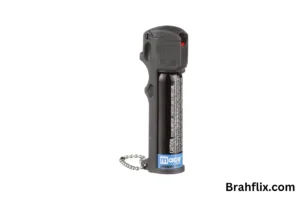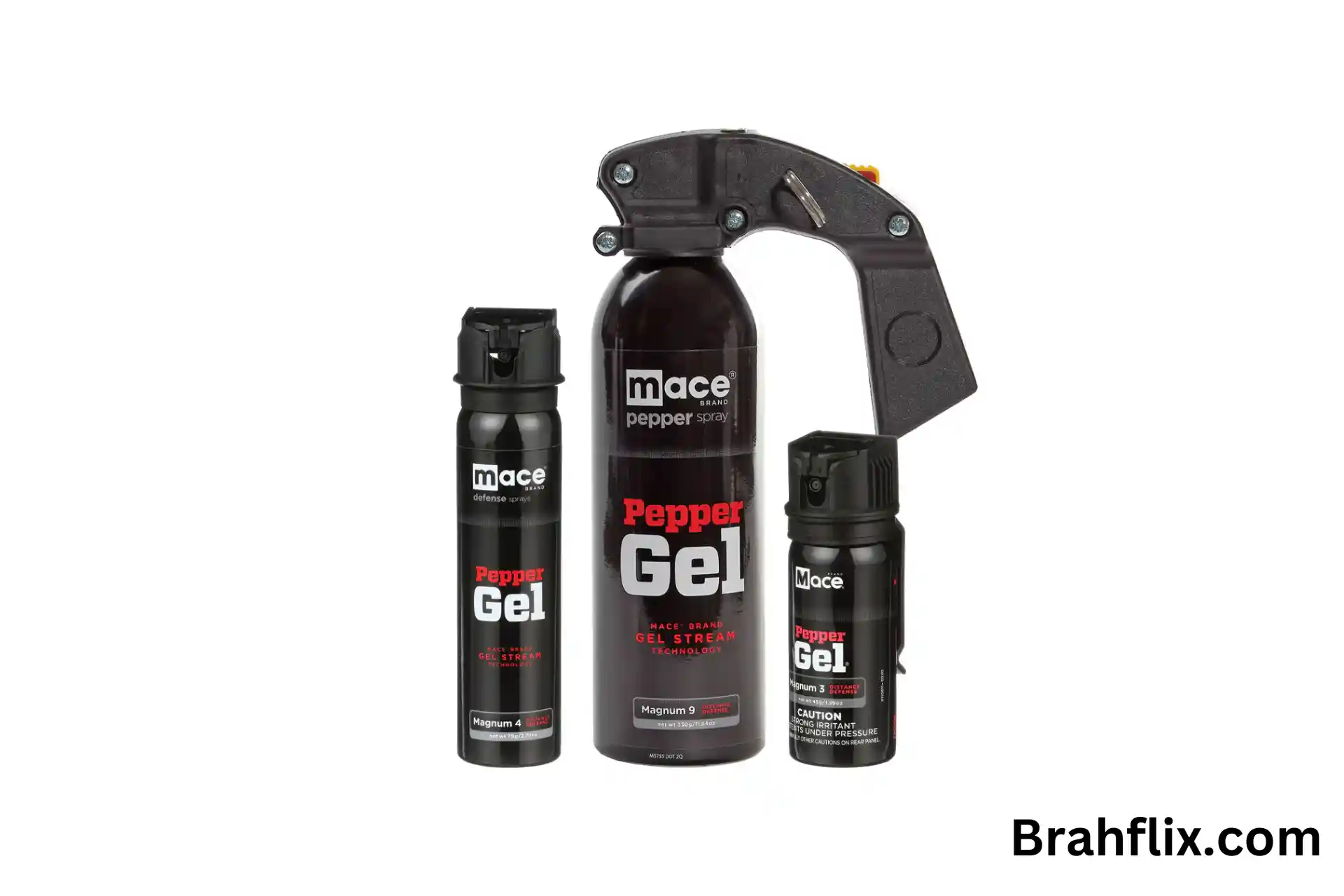Introduction
In today’s world, personal safety is a growing concern for many individuals. One tool that has gained popularity for self-defense is mace spray, a type of pepper spray designed to incapacitate an attacker temporarily. While often used interchangeably with similar products, mace spray has unique features and applications that make it a vital consideration for personal security.
This article delves into the various aspects of mace spray, from its formulation and effectiveness to legal considerations and safety tips. By understanding these factors, you can make informed decisions about personal defense strategies.
Key Takeaways
- What is Mace Spray?: A closer look at its composition and uses.
- Effectiveness: Understanding how mace spray works and its impact on assailants.
- Legal Considerations: Knowledge of the laws surrounding mace spray in different jurisdictions.
- Safety Tips: Recommendations for safe usage and handling.
- Alternatives: An overview of other self-defense options available.
What is Mace Spray?
Composition and Functionality
Mace spray, often referred to as pepper spray, is a self-defense product that uses an aerosol canister to dispense a potent mixture designed to incapacitate an assailant. It typically contains oleoresin capsicum (OC), a natural oil derived from hot peppers, which causes an intense burning sensation when it comes into contact with mucous membranes.
Key Components
- Oleoresin Capsicum (OC): The active ingredient that causes pain and temporary blindness.
- Propellant: A gas that pushes the liquid out of the canister, allowing for easy application.
- Other Additives: Some formulations may include dyes for identification or UV markers.
Historical Background
The term “Mace” originally referred to a specific brand of tear gas developed in the 1960s. Over time, it has become a generic term for various self-defense sprays. While the use of tear gas for crowd control is well-documented, mace spray specifically targets individual self-defense.
Mechanism of Action
When sprayed, mace induces immediate effects on the assailant, including:
- Temporary Blindness: Causes intense tearing and discomfort in the eyes.
- Respiratory Distress: Inhalation can lead to coughing and difficulty breathing.
- Pain and Disorientation: A burning sensation on the skin and mucous membranes may incapacitate the attacker.
Practical Uses
Mace spray is primarily used for self-defense against potential threats, including:
- Assaults: Protecting oneself from muggings or physical attacks.
- Animal Encounters: Deterring aggressive dogs or wildlife during outdoor activities.
Effectiveness of Mace Spray
Statistical Insights
The effectiveness of mace spray as a self-defense tool is often backed by statistics. According to a study published in the Journal of Forensic Sciences, individuals using pepper spray for self-defense reported a success rate of over 90% in deterring attackers. This effectiveness can be attributed to several factors:
- Immediate Reaction: Most assailants are not prepared for an intense spray to the face, allowing victims to escape.
- Psychological Impact: The sight of a canister can deter an attacker even before it is used.
Proper Usage Techniques
To maximize effectiveness, users should be trained in proper spray techniques:
- Aim for the Eyes: Direct the spray at the assailant’s face, specifically targeting the eyes.
- Short Bursts: Use short bursts rather than continuous spraying to conserve the product.
- Distance Matters: Maintain a safe distance (typically 6-10 feet) to avoid counterattacks.
Factors Influencing Effectiveness
While mace spray is generally effective, certain factors can impact its performance:
- Environmental Conditions: Wind can affect the direction of the spray, reducing effectiveness.
- Assailant’s Tolerance: Some individuals may have a higher tolerance to the effects of OC.
- Product Quality: The formulation and expiration date can affect the potency of the spray.
Limitations
It’s crucial to understand that mace spray is not a guaranteed solution. Situational awareness, avoidance strategies, and other self-defense techniques should also be employed alongside mace spray for optimal safety.
Legal Considerations of Mace Spray
Understanding the Laws
The legality of mace spray varies significantly across jurisdictions, making it essential to understand local laws. Here are some general guidelines:
- United States: Most states allow the use of mace spray, but there are restrictions on size and formulation. Some states may require permits or have age restrictions.
- International Laws: Many countries have strict regulations regarding self-defense sprays. For example, in the UK, the possession of mace or pepper spray is illegal.
Buying Guidelines
When purchasing mace spray, it’s vital to ensure compliance with local laws:
- Purchase from Reputable Sources: Buy from licensed dealers who understand legal requirements.
- Check for Age Restrictions: Most regions require users to be at least 18 years old.
- Review Product Specifications: Ensure the product meets legal criteria for use in your area.
Consequences of Illegal Use
Using mace spray illegally can result in severe penalties, including:
- Fines and Legal Fees: Incurred costs from legal actions.
- Criminal Charges: Depending on the situation, using mace spray inappropriately could lead to assault charges.
Self-Defense Laws
Understanding the laws surrounding self-defense is crucial when considering mace spray. Many jurisdictions have “stand your ground” laws that allow individuals to use force if they feel threatened. However, the use of mace must be deemed proportional to the threat level.
Safety Tips for Using Mace Spray
Proper Handling and Storage
To ensure safety when using mace spray, consider the following guidelines:
- Store in a Cool, Dry Place: Heat can cause the canister to rupture.
- Keep Out of Reach of Children: Ensure that the spray is stored securely to prevent accidental use.
- Check Expiration Dates: Regularly inspect the canister to ensure it hasn’t expired.
Using Mace Spray Effectively
When confronted with a potential threat, follow these steps:
- Stay Calm: Maintain composure to make clear decisions.
- Assess the Situation: Determine if using mace is appropriate for the threat level.
- Deploy Quickly: If necessary, use the spray swiftly to incapacitate the attacker.
After the Incident
If you use mace spray, follow these post-incident steps:
- Contact Authorities: Report the incident to the police to ensure your safety and legal protection.
- Seek Medical Attention: If the assailant requires medical care, document the incident.
- Reflect on the Situation: Analyze the circumstances to improve your awareness and response in future encounters.
Training Recommendations
Consider enrolling in self-defense classes that include training on using mace spray effectively. Familiarity with the product and practicing deployment can significantly enhance your confidence in a threatening situation.
Alternatives to Mace Spray
Other Self-Defense Tools
While mace spray is an effective self-defense option, several alternatives can also provide personal security:
- Personal Alarms: Loud alarms can deter attackers and draw attention.
- Stun Guns: Deliver an electric shock to incapacitate an assailant temporarily.
- Self-Defense Keychains: Compact tools designed for easy carry that can deliver strikes or distractions.
- Tactical Flashlights: Bright lights can disorient an attacker and serve as a striking tool.
Choosing the Right Self-Defense Tool
Selecting the right self-defense tool depends on personal preference, comfort level, and the nature of potential threats. Here are some considerations:
- Portability: Ensure the tool is easy to carry and accessible when needed.
- Legal Compliance: Research local laws governing the use of various self-defense tools.
- Training Opportunities: Consider options that offer training or instructional resources.
Combining Strategies
For optimal safety, consider combining multiple self-defense strategies. For example, carrying mace spray alongside a personal alarm can enhance your ability to respond to various situations effectively.
FAQs
1. Is mace spray legal to carry everywhere?
The legality of carrying mace spray varies by state and country. Always check local laws before purchasing or carrying it.
2. How long does mace spray last once deployed?
Mace spray typically has a range of about 6-10 feet, depending on the product. Ensure you practice aiming and spraying for effective use.
3. What should I do if I accidentally spray myself?
Move to a well-ventilated area, flush your eyes with water, and seek medical attention if symptoms persist.
4. Are there age restrictions for purchasing mace spray?
Most jurisdictions require users to be at least 18 years old to purchase mace spray.
5. Can mace spray be used against animals?
Yes, mace spray can deter aggressive animals, but be cautious about the legal implications and local regulations regarding its use on animals.
Conclusion
Understanding mace spray and its applications can significantly enhance personal safety and self-defense strategies. With its potent formulation and proven effectiveness, mace spray is a valuable tool for those looking to protect themselves. However, it’s essential to be aware of the legal implications and safety practices associated with its use.
By combining mace spray with other self-defense techniques and tools, you can create a comprehensive approach to personal safety. Have you considered incorporating mace spray into your self-defense toolkit? What other strategies do you find effective? Explore more insights on personal safety and self-defense by checking out our other blogs!


